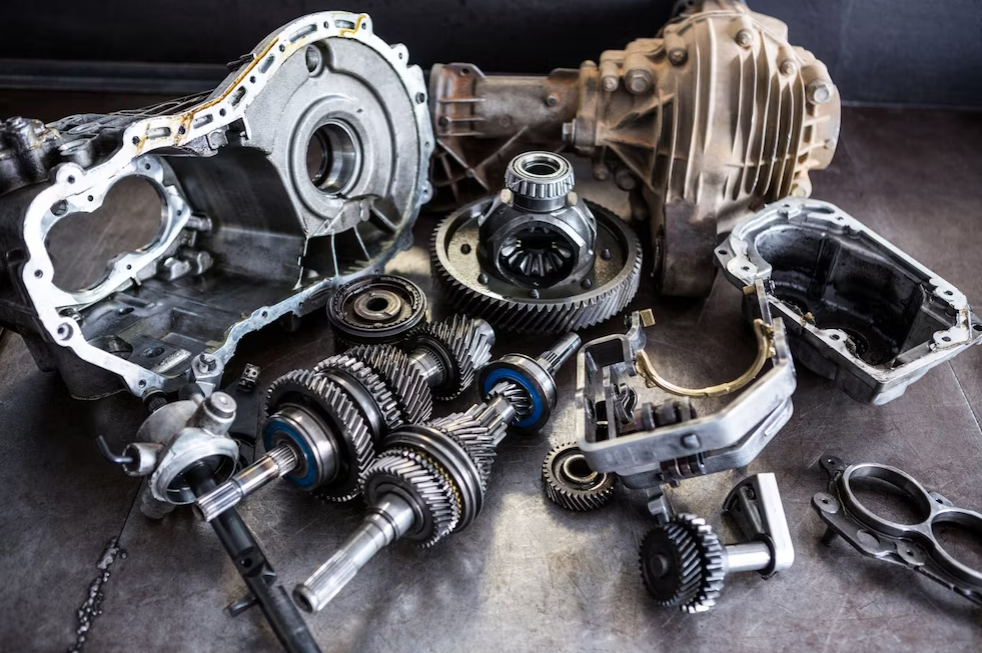Advancing Vehicle Control: The Evolution of Rear Steering
When driving in various weather conditions and on roads, steering systems are essential. Though rear-wheel steering has recently improved, front-wheel steering has long been the norm, and this is changing how cars handle. This article examines rear steering's complexities, benefits, uses, mechanics, and possible future advancements.

Understanding Rear Steering
Rear steering involves actively involving the back wheels in steering alongside the front wheels. This system enhances control beyond conventional setups, contributing to improved handling and overall maneuverability.

Enhanced Maneuvrability: Because both the front and back wheels steer, rear steering improves responsiveness and agility, especially while turning or cornering.
Increased Stability: Rear steering increases stability, particularly at high speeds, by minimizing oversteer and understeer by dispersing steering forces over both wheels.
Improved Traction: Rear steering improves wheel alignment, which increases traction and grip on roads. This is particularly helpful in bad weather.
Decreased Turning Radius: Cars with rear steering may turn more sharply, which lowers the necessary turning radius and is useful while driving through crowded city streets.

Vehicle Industry: Rear steering systems are included by automakers in buses, trucks, and passenger automobiles to improve driver confidence, safety, and maneuverability.
Motorsports: To give drivers a competitive edge and improve lap times and cornering performance, rear steering is essential.
Industrial and Agricultural Vehicles: By making it easier to manage big loads and navigate difficult terrain, rear steering systems improve productivity and safety in industrial and agricultural situations.

Rear steering functions through sophisticated mechanisms:
Active rear steering: modifies the angle of the back wheels dynamically in response to steering input, vehicle speed, and road conditions by using actuators and sensors.
Four-wheel steering maximizes stability and maneuverability by coordinating the steering of all four wheels through the integration of mechanical connections or electrical controls.

Despite its benefits, rear-wheel steering presents challenges:
Cost Implications: Rear steering technology installation could raise car prices and make it less affordable for consumers in the mass market.
Rear steering systems require routine maintenance in order to function at their best and be reliable, which raises the cost of ownership over time.
Compatibility Issues: Careful engineering and integration efforts may be necessary to ensure compatibility when integrating rear steering with the systems and features of the vehicle.
Emerging Technologies: Improvements in rear steering systems are being fueled by ongoing research & development on materials, sensors, and control algorithms.
Integration with Autonomous Driving: It is expected that rear steering technology will be crucial to the advancement of safer and more effective self-driving capabilities.
Where is rear-steering technology applied?
It's used in automotive, motorsports, and industrial/agricultural vehicles to enhance safety, productivity, and maneuverability.
How does rear steering work?
Rear steering operates through mechanisms like active rear steering and four-wheel steering, adjusting the angle of the rear wheels based on driving conditions.
What challenges are associated with rear-steering technology?
Challenges include cost implications, maintenance needs, and compatibility issues with existing vehicle systems.
In conclusion, rear steering technology provides unparalleled levels of traction, stability, and maneuverability, representing a major advancement in vehicle control. The field of vehicle dynamics has a bright future if innovation and improvement continue. Adopting rear-seat technology offers motorists safer and more pleasurable travel experiences.
Click on the following link to read another blog post: Road Trip Tips: How To Prepare Your Car For A Road Trip.















